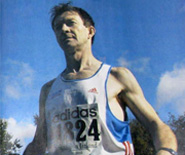Iran Article On Its Nuclear Program
Courtesy of The New York Times.
Iran Is Providing Information on Its Detonators, Atomic Agency Says
By DAVID E. SANGER and WILLIAM J. BROAD
May 23, 2014
WASHINGTON — For six years, international nuclear inspectors have been demanding that Iran turn over evidence of experiments that they suspect could have been part of a secret effort to solve the complex science of detonating a nuclear weapon.
On Friday, the International Atomic Energy Agency, the monitoring arm of the United Nations, said that it was finally beginning to see the information it had long sought — but that Iran insisted that the detonators were for non-nuclear purposes.
The disclosure was buried in a report by the atomic agency that detailed major progress Iran had made in diluting most of its stockpile of medium-enriched uranium, nuclear fuel that the West has long feared could be converted relatively quickly into weapons-grade material. Getting Iran to dilute that uranium was perhaps the biggest single accomplishment of the interim deal struck last year, creating room for the current negotiations, which hit their first major roadblock last week.
While there were no details in the report about what data Iran had supplied on what are called “exploding bridge wire detonators,” the disclosure that a substantive discussion had begun with the agency suggested a significant change in tactics in Tehran. For years Iranian officials have refused to answer questions about what the agency blandly calls “possible military dimensions” of Iran’s program. The Iranians have claimed the queries are based on what they call Western fabrications of evidence and lies propagated by the C.I.A.
But inside American and European intelligence agencies, the detonator issue is just one of many questions about a suspected secret weapons-design program buried inside university laboratories and institutes. The suspicions were heightened nearly a decade ago, when evidence emerged from a laptop computer smuggled out of the country by an Iranian scientist recruited by Western intelligence agencies. The data he provided included diagrams, videos and other results that appeared to strongly suggest interest in weapons design.
While much of the work ended in 2003, there are disagreements in the intelligence agencies of different countries about whether, and how intensely, it was resumed. The negotiations over the evidence of weapons work have been taking place on a separate track from the talks between Iran and the major powers about its nuclear enrichment program. While the atomic agency inspectors are permitted to visit fuel production areas daily, the Iranians continue to block access to the scientist that the United States, Israel and others say ran many of the main weapons-research operations, Mohsen Fakrizadeh.
Some other Iranian researchers believed involved in the program have been assassinated in recent years, in operations that have been attributed to Israel. Israeli officials have never confirmed or denied responsibility.
The atomic agency’s report was issued at a moment when negotiators have reached a roadblock with Iran over how much it is willing to dismantle its nuclear fuel-making infrastructure. American officials want Iran to reduce the number of centrifuges — the machines that purify uranium — to around 4,000 from the current 19,000. The Iranians want to expand the number, over time, to roughly 50,000, saying they need such capacity to produce fuel for civilian reactors yet to be built.
In the meantime, though, Iran is complying with all the elements of its interim agreement. The report of the atomic agency, issued from its Vienna headquarters to member states, showed that Iran had “halted nuclear activities in the areas of greatest proliferation concern and rolled back its program in other key areas,” said an analysis from the Arms Control Association, an advocacy group in Washington.
The detonators that Iran began discussing with the atomic agency were invented during the Manhattan Project, the American-led effort to build the first atomic bomb during World War II. The detonators are similar to blasting caps: an electric current fires them off. But they use a much higher voltage and the timing of the explosion can be far more precise, allowing a number to fire more or less simultaneously.
While they are used in nuclear devices, they are also essential in mining and rocketry, as well as explosive welding and metal forming. The atomic agency said that at a May 20 meeting Iran had provided “additional information and explanations,” including documents, to substantiate its claim that it had tested the detonators for “a civilian application.”
The detonators are one of seven different technologies the atomic agency said, in a 2011 report, that Iran was believed to have investigated.
The report said the agency was assessing Iran’s information. “It is important,” the report added, “that Iran continues to engage with the agency to resolve all outstanding issues” related to the nuclear program.













May 26th, 2014 at 1:03 pm
Wow my head is like a time bomb after reading that article Tony, you always supply interesting information on the countries you run through-:)